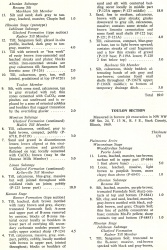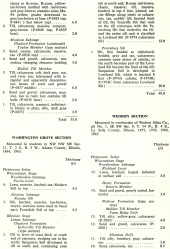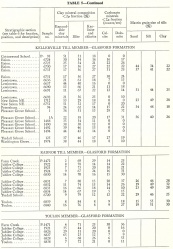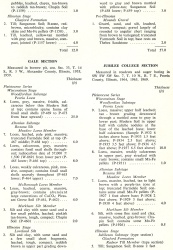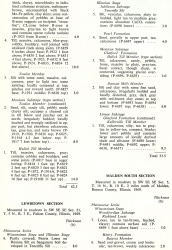Toulon Member
Lithostratigraphy: Glasford Formation >>Toulon Member
Chronostratigraphy: Cenozoic Erathem >>Quaternary System >>Pleistocene Series
Primary source
Willman, H. B., and John C. Frye, 1970, Pleistocene Stratigraphy of Illinois: Illinois State Geological Survey Bulletin 94, 204 p.
Contributing author(s)
H. B. Willman and John C. Frye
Name
Original description
Toulon Member, Glasford Formation (Willman and Frye 1970).
Derivation
The Toulon Member of the Glasford Formation is named for Toulon, Stark County.
Other names
History/background
Type section
Type location
The type section is from exposures in a borrow pit three quarters of a mile west of Toulon, NW NW SW Sec. 24, T. 13 N., R. 5 E., described in the Toulon Section (table 6).
| Table 6 -- Stratigraphic Sections (partial) The following 21 stratigraphic sections describe exposures in Illinois and illustrate many of the aspects of Pleistocene stratigraphy. These sections contain the type localities for 21 rock-stratigraphic units, 4 soil-stratigraphic units, and 3 time-stratigraphic units and include paratypes for several other units. The sample numbers preceded by "P" are the numbers used in the Illinois State Geological Survey collections. Analytical data on many of these samples are on file at the Survey. The sections are arrange alphabetically by name. |
Type author(s)
Type status
Reference section
Reference location
Reference author(s)
Reference status
Stratigraphic relationships
It is bounded above by the base of the Radnor Till Member and below by the top of the underlying Hulick Till Member; it can be identified as a member only when it occurs between these two till members. The uppermost silt may be a stratigraphic equivalent of the Roby Silt of east-central Illinois, but this has not as yet been confirmed.
Extent and thickness
It is 5 to 10 feet thick, but, as it has not been widely recognized, it probably is much thicker in some areas.
Lithology
It consists of glacially derived sand, gravel, and silt. In the Jubilee College Section (table 6) the member consists of calcareous, gray silt and fine sand at the top, overlying a weakly developed unnamed soil in the top of sand and gravel outwash, which in turn unconformably overlies the Hulick Till. Compositional data for the Toulon Member are given in table 5.
|
| Table 6 -- Stratigraphic Sections (partial) The following 21 stratigraphic sections describe exposures in Illinois and illustrate many of the aspects of Pleistocene stratigraphy. These sections contain the type localities for 21 rock-stratigraphic units, 4 soil-stratigraphic units, and 3 time-stratigraphic units and include paratypes for several other units. The sample numbers preceded by "P" are the numbers used in the Illinois State Geological Survey collections. Analytical data on many of these samples are on file at the Survey. The sections are arrange alphabetically by name. |
Core(s)
Photograph(s)
Contacts
Well log characteristics
Fossils
Age and correlation
As the minor soil in the upper part of the member is the boundary of two substages, the bulk of the lower part of the member is in the Monican Substage, but the upper silts are in the Jubileean Substage of the Illinoian Stage. The lower, outwash part of the member is judged to be retreatal outwash, whereas the local silts at the top are pro-glacial deposits in front of the advancing glacier that deposited the overlying Radnor Till Member.
Environments of deposition
Economic importance
Remarks
References
ISGS Codes
| Stratigraphic Code | Geo Unit Designation |
|---|---|
